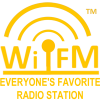
Current Best Practices & Frameworks (2024-2025)
April Dunford’s “Obviously Awesome” Framework remains the gold standard for SaaS positioning:
- 5 Core Components: Competitive alternatives, unique attributes, value proof, target market characteristics, and market category
- 10-Step Process: From customer analysis to positioning validation
- Growth-Stage Application: Moving from broad positioning to focused niche domination Amazon +2
Product-Led Growth (PLG) Positioning Trends:
- 20% growth in PLG adoption over past 3 years G2Phoenixstrategy
- 50% higher growth rates for PLG companies vs traditional sales models G2Phoenixstrategy
- Focus on product value as primary customer acquisition method Advanceb2b
T2D3 Growth Model Framework (Triple revenue for 2 years, double for 3):
- Prioritize growth initiatives with highest impact
- “Nail Your Niche” before expanding to broader markets
- Build modern marketing functions integrating technology and data
- Execute account-based marketing for growth-stage efficiency T2d3
Real Case Studies & Examples
Userlist’s Positioning Transformation:
- Before: “Email automation for SaaS” (broad, crowded space)
- After: “Customer messaging platform for B2B SaaS”
- Key Strategy: Positioned against Intercom specifically, not generic email tools
- Result: Instant customer understanding and value appreciation Userlist
Short.io’s Niche Focus Strategy:
- Positioning: Link shortening with branded URLs for trust-building
- Differentiator: Custom domain capability vs generic shortened links
- Strategy: Problem-focused positioning rather than feature-based
- Outcome: Avoided all-in-one positioning pitfalls with clear value proposition Powered by Search
New Relic’s Early Growth Strategy:
- Initial Focus: Ruby on Rails developers (narrow niche)
- Evolution: Later expanded to broader developer market
- Key Lesson: 2-3x longer validation time needed than most founders expect
Specific Growth-Stage Tactics
Transitioning from Early to Growth Stage:
- Niche Down Strategically: Focus on specific market segment before expanding
- Data-Driven Refinement: Use customer feedback and usage data to refine positioning
- Competitive Differentiation: Move beyond feature comparison to value-based positioning
- Sales Enablement: Create positioning that supports both inbound and outbound sales
Key Strategic Shifts:
- From product features to customer outcomes
- From broad appeal to niche domination
- From internal assumptions to customer validation
- From static to dynamic positioning refinement
Market Data & Statistics
SaaS Market Growth (2024-2025):
- Market Size: $908.21 billion projected by 2030 (17.6% CAGR) Rampiq AgencyTripledart
- Competition: 30,000+ SaaS companies currently competing Tripledart
- Enterprise Adoption: 177 SaaS apps average for large enterprises
- AI Integration: 70% of SaaS companies testing/monetizing AI products SalesmateKlipfolio
Positioning Impact Metrics:
- Sales Cycle: Well-positioned companies report 20-30% shorter cycles
- CAC Reduction: Strong positioning can reduce CAC by 15-25%
- Growth Correlation: Better positioning directly impacts conversion rates and CLV
Expert Insights
From April Dunford: “Positioning is the act of deliberately defining how you are the best at something that a defined market cares a lot about.” Manas J. SaloiAdvanceb2b
From T2D3 Research: Triple revenue for 2 years, then double for 3 years requires focus over breadth in early growth stages.
From OpenView Partners: ARR per FTE becomes North Star metric for productivity; retention is the new growth strategy in 2024-2025.
Common Mistakes to Avoid
- All-in-One Positioning Trap: Trying to be everything to everyone
- Feature-First Positioning: Leading with features instead of customer outcomes
- Broad Market Targeting: Attempting to serve too wide an audience
- Static Positioning: Setting positioning once and never revisiting
- Internal-Focused Positioning: Basing decisions on internal opinions vs customer reality
- Competitor Imitation: Copying successful competitors’ positioning Orengreenberg
Actionable Frameworks
The SaaS Positioning Canvas (5-Step Framework):
- Define your ideal customer profile
- Identify core problem you solve
- Establish your authority & expertise
- Demonstrate unique value proposition
- Calculate cost of doing nothing Powered by Search
RICE Framework for Feature Prioritization:
- Reach: Number of users affected
- Impact: Effect on key metrics (1-5 scale)
- Confidence: Certainty in reach/impact estimates
- Effort: Resources required for implementation ThoughtSpotAalpha
Tools & Resources
Competitive Analysis: SEMrush/Ahrefs, Competitors App, SimilarWeb, G2/Capterra Customer Research: Intercom, Hotjar, Typeform, Gong Positioning Validation: UserTesting, Maze, Wynter Analytics: Mixpanel, ChartIO, ProfitWell, Klipfolio
Key Metrics for Success
Primary Positioning Metrics:
- Website conversion rate (visitors to trial/demo signups)
- Trial-to-paid conversion rate
- Sales velocity (time from first touch to close)
- Net Revenue Retention (industry median 110%) IconiqcapitalBenchmarkit
- Customer Lifetime Value and churn rate KlipfolioThoughtSpot
